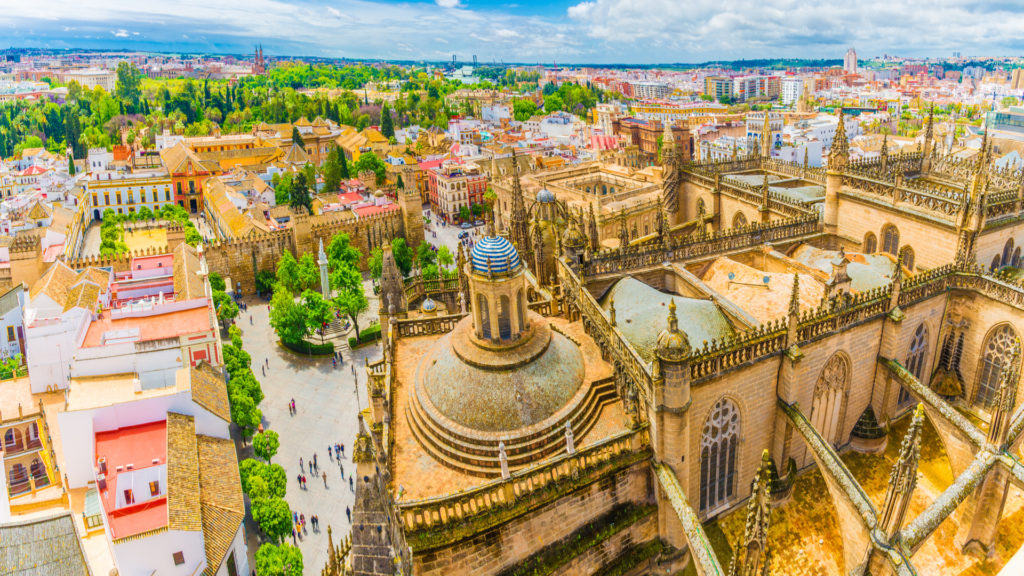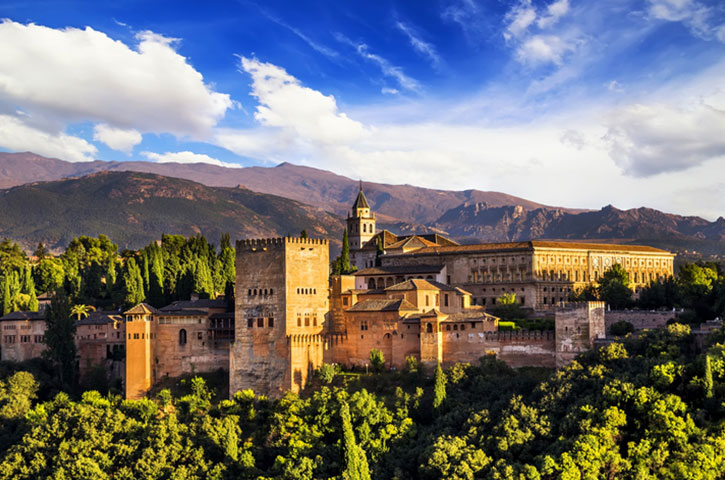From Picasso to Tapas: Exploring the Rich Cultural Heritage of the Costa del Sol!
The Costa del Sol is one of the most popular tourist destinations in Spain, and for good reason. With its beautiful beaches, warm weather, and luxurious resorts, it’s the perfect place to relax and unwind. However, the region has so much more to offer than just sun, sea, and sand. The Costa del Sol is steeped in history and culture, and it’s a treasure trove of artistic, architectural, and culinary wonders waiting to be discovered.

The Birthplace of Picasso
Our journey through the cultural heritage of the Costa del Sol begins in Malaga, the birthplace of one of the most famous artists of the 20th century, Pablo Picasso. The Picasso Museum in Malaga is a must-visit for art lovers. Housed in a beautiful 16th-century palace, the museum boasts a collection of over 200 works by the artist, including paintings, drawings, and sculptures. The museum is not only a showcase of Picasso’s work but also a celebration of his life and artistic evolution.
For those who want to delve deeper into the artist’s life, a visit to the nearby Casa Natal is a must. The house where Picasso was born has been turned into a museum that honors his legacy. Visitors can explore the rooms where Picasso spent his childhood and see original furniture, paintings, and other personal items. The museum also provides an insight into the artist’s family life, childhood memories, and early influences.
The Charm of Mijas
As we move along the coast, we come to the charming village of Mijas. This quintessential Andalusian town is known for its narrow streets, whitewashed houses, and stunning views of the sea. Mijas is a perfect example of the region’s traditional architecture and is full of character and charm. Visitors can take a leisurely walk through the village’s cobblestone streets, explore the local shops and galleries, and sample some of the town’s famous sweets and pastries.
One of the most popular attractions in Mijas is the donkey taxi. This unique experience allows visitors to ride a donkey through the streets of the village while taking in the sights and sounds of the town. The donkey taxis have been operating in Mijas for over 50 years and are a beloved part of the town’s cultural heritage.
The Alhambra: A Jewel of Islamic Architecture
Further inland, in the city of Granada, we find the Alhambra, one of Spain’s most iconic landmarks. This fortress and palace complex was built during the Moorish occupation of Spain in the 14th century and is a stunning example of Islamic architecture. The Alhambra features intricate tilework, ornate carvings, and serene gardens, all of which are a testament to the beauty and sophistication of the Islamic civilization.

A visit to the Alhambra is a journey through time and a window into the rich history of Andalusia. Visitors can explore the various palaces, courtyards, and gardens that make up the complex and marvel at the intricate details and exquisite craftsmanship of the buildings. The Alhambra is also home to the Generalife, a collection of gardens and fountains that offer a peaceful retreat from the bustle of the city.
The Caminito del Rey: A Thrilling Adventure
For those seeking a more adrenaline-fueled cultural experience, the Caminito del Rey is an exciting option. This trail, which was once considered one of the most dangerous in the world, has been restored and now offers visitors a thrilling walk along the cliffside, with breathtaking views of the Guadalhorce River below. The trail is located in the nearby province of Malaga and is a perfect way to experience the region’s natural beauty and history.
The Caminito del Rey is a two-hour hike, and visitors must wear helmets and harnesses for safety. The trail is narrow, and there are sheer drops on either side, which adds to the excitement of the experience. Along the way, visitors can admire the natural beauty of the area, including the stunning gorge, the river, and the surrounding mountains.
The route was originally built over a century ago as a way for workers to cross the gorge to reach a hydroelectric power plant. Over time, the trail fell into disrepair and became dangerous, but in recent years, it has been restored to its former glory. Today, the Caminito del Rey is a popular tourist attraction that provides an unforgettable experience for those who are brave enough to take on the challenge.
Tapas: A Gastronomic Delight
No exploration of the Costa del Sol’s cultural heritage would be complete without a mention of its culinary delights. Andalusian cuisine is known for its bold flavors, fresh ingredients, and creative combinations. One of the most popular culinary traditions in the region is tapas, small plates of food that are meant to be shared among friends and family.
The origins of tapas are unclear, but there are several popular theories. Some say that the tradition began when bar owners in Andalusia would place a piece of bread or cheese on top of a customer’s drink to keep flies away. Others say that tapas were invented as a way to encourage people to drink more alcohol by providing a small snack to go along with their drinks.
Whatever the origin, tapas have become an integral part of Andalusian culture, and there are countless varieties to try. Some of the most popular tapas include patatas bravas (fried potatoes with spicy sauce), croquetas (small fried balls filled with cheese, ham, or other ingredients), and tortilla española (a thick omelet with potatoes and onions). Visitors to the Costa del Sol can try these dishes and many others at local bars and restaurants.
The Costa del Sol is much more than just a beach resort. It’s a region with a rich cultural heritage that is waiting to be explored. From the birthplace of Pablo Picasso to the thrilling Caminito del Rey trail, the Costa del Sol offers a variety of experiences that are sure to delight visitors. Andalusian cuisine is also a highlight, with tapas being a must-try for anyone visiting the region.

As we’ve seen, there are many aspects of the Costa del Sol’s cultural heritage that are worth discovering. Whether you’re interested in art, history, architecture, or food, there’s something for everyone in this beautiful region of Spain. So why not take a break from the beach and explore the rich cultural heritage of the Costa del Sol? You won’t regret it.
If you’re planning a trip to the Costa del Sol, why not make it even more special by booking a holiday villa with Club Villamar? With a wide selection of properties available, including villas with private pools, you can enjoy the ultimate in relaxation and comfort during your stay. Plus, with Club Villamar’s excellent customer service and attention to detail, you can rest assured that your holiday will be a memorable one. So why wait? Book your dream villa on the Costa del Sol today with Club Villamar!